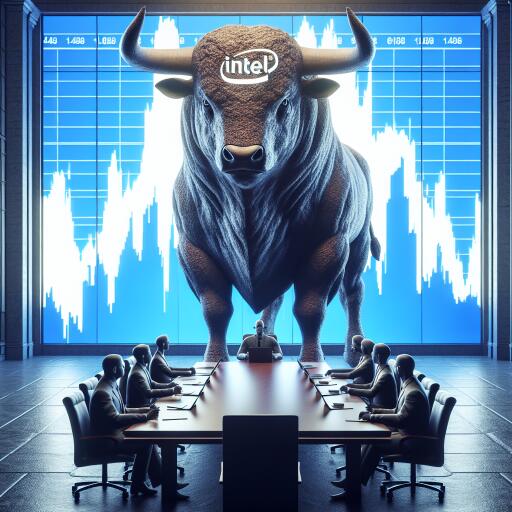Intel Encounters an Unprecedented Quarterly Decline Amidst PC Sales Slump: Inside the Tech Giant’s Struggle
In an industry where the tides of fortune can turn quickly, Intel Corporation recently found itself navigating through turbulent waters. The tech behemoth, once known for dominating the market with its client computing products, is now grappling with a significant downturn. This was starkly highlighted in its most recent financial report, marking a historic low for the company with the largest quarterly drop ever recorded.
During the initial months of 2023, the landscape for PC sales, a cornerstone of Intel’s revenue, drastically shifted. This shift contributed to the company’s unprecedented setback. A report from International Data Corp revealed a sharp 28.5 percent decline in PC purchases compared to the previous year. This downturn is attributed to the post-pandemic adjustment, where the surge in electronic devices purchases — incited by remote work and study needs during lockdowns — ebbed as people returned to their normal routines.
Intel’s financial performance paints a vivid picture of these challenges. In the first quarter of 2023, the company’s revenues plummeted to $11.71 billion. This figure, although surpassing analyst predictions, was a staggering 35 percent less than the revenue generated in the same period the prior year. Specifically, Intel’s PC chip sales saw a severe downturn, dropping by 37 percent.
Despite the somber picture these numbers seem to paint, Intel’s leadership harbors a cautiously optimistic outlook. During a recent statement, the company’s Chief Financial Officer, David Zinsner, suggested a silver lining, noting the PC market’s return to a semblance of normalcy from the end of 2022. Similarly, Pat Gelsinger, the CEO of Intel, expressed optimism about the gradual improvement in the PC market in recent times.
Intel’s endeavor to recalibrate its business model and strategy over the past decade comes into context amidst these financial adversities. With an ambition to transcend its primary market of PC microprocessors, Intel has been venturing into burgeoning fields like artificial intelligence, the Internet of Things (IoT), and autonomous vehicles. Particularly, its Data Center Group (DCG), which caters to server chips, alongside the IoT segment, have been spotlighted as significant contributors and growth areas for the business.
However, not all is smooth sailing, especially in the face of stiff competition. Intel’s dominance, particularly within its client computing division, has been challenged by rivals like Advanced Micro Devices (AMD) and Qualcomm. These competitors are rapidly gaining ground, further intensifying the competitive landscape.
Reflecting on the financial implications, the downturn led to a stark loss of $2.76 billion in the first quarter of 2023 alone, signaling back-to-back quarterly losses for Intel. This situation contrasts sharply with its performance at the end of 2017, where the company recorded a previous significant loss of $688 million.
Looking forward, Intel projects its revenues for the April-June quarter to range between $11.5 and $12.5 billion, still trailing behind its past achievements in 2022. Nevertheless, amidst these challenging times, the slight optimism expressed by company executives following the announcement hints at a potential revitalization, reflected in a 6.1 percent uptick in company shares.
The road ahead for Intel is undeniably steep, as it endeavors to navigate through the shifting demands of the tech industry. With its eyes set on innovation and capturing new markets, the world will be watching closely to see how this tech giant adapts and evolves in its quest to regain lost ground and reassert its dominance in the ever-evolving digital arena.










